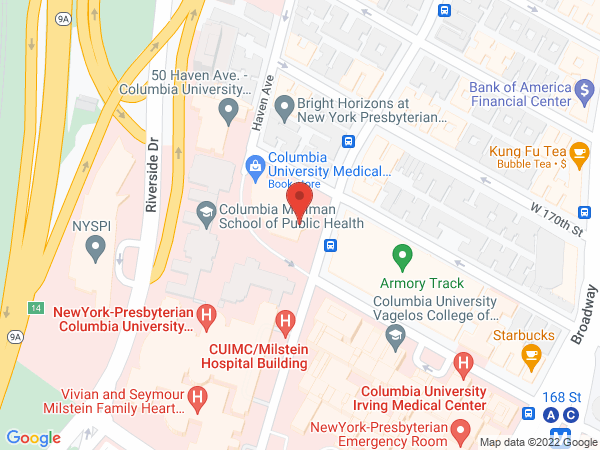Peng Lab

Location and Contact Information
Sleep is a fundamental biological process ubiquitously conserved in the animal kingdom. Growing evidence emphasizes the importance of sleep to our mental and physical health. Yet, little is known about how the brain initiates, maintains, and terminates sleep states. The goal of our research is to understand the circuit and molecular mechanisms underlying sleep regulation in both normal and diseased brains. We use a multidisciplinary approach including electrophysiology, calcium imaging, optogenetics, chemogenetics, pharmacology, viral-based neural tracing, molecular biology, and mouse genetics to study the neurobiology of sleep in mice.
In collaboration with other faculty members at the IGM and Columbia, we are also interested in understanding the relationship between sleep disruption and neurological diseases. Specifically, we focus on epilepsy and neurodegeneration. We aim to identify common neuropathological mechanisms underlying abnormal sleep and brain diseases.
For more information: https://www.thepenglab.org

Neurons
Current projects
- Dissecting brain circuits controlling the transition between sleep and wakefulness
- Investigating sleep-dependent epigenomic modification in memory consolidation
- Exploring circuit abnormalities underlying nocturnal frontal lobe epilepsy
- Understanding the relationship between sleep dysfunction and Huntington’s disease
Visit The Peng Lab
Lab Members
Sasa Teng, PhD
- Associate Research Scientist
Education and Training
BS, 2009, Jilin University, Changchun, China
PhD, 2014, Peking University, Beijing, ChinaPrior to joining the Peng Lab, Sasa worked as a postdoctoral fellow in Guang Yang’s lab (2015-2018) at the New York University medical center. My long-term research interest is to study the neural circuits controlling the transition between wakefulness and sleep. I have a strong medical and biological background and solid training in neuroscience field during my graduate study and my previous postdoc training. We use a multidisciplinary approach including electrophysiology, calcium imaging, optogenetics, chemogenetics, pharmacology, viral-based neural tracing, molecular biology, and mouse genetics to study the neurobiology of sleep.

Fenghua Zhen, PhD
- Associate Research Scientist
Education and Training
BS, 2002, Shanghai JiaoTong University, Shanghai, China
PhD, 2008, National University of Singapore, SingaporeI received my PhD in developmental biology from National University of Singapore and worked as a postdoctoral fellow in Hong Kong University of Science and Technology. I have a strong background on molecular cell biology and microscopy analysis, including gene-modification, transgenic animal manipulation, and in vivo microscopy imaging in living animals. I joined Dr. Peng’s lab as a postdoctoral research scientist in 2018. I am interested in the molecular and cellular mechanism controlling the initiation/transition from wakefulness to sleep, as well as the maintenance or switching between REM and NREM sleep. My current projects are focused to identify genetic-specific neuron cell types and their downstream projecting targets that involved in the initiation of sleep.

Xinyue (Tracy) Chen
- Graduate Student
![Headshot of Xinyue (Tracy) Hu]()
Ruining (Rae) Hu
- Visiting Student from Nanjing University

Select Publications
Teng S, Zhen F, McRae BR, Zhu E, Frankel WN, Peng Y. (2022) Sensory regulation of absence seizures in a mouse model of Gnb1. bioRXiv. doi: 10.1101/2022.04.28.489780.
Teng S, Zhen F, Wang L, Schalchli JC, Simko J, Chen X, Jin H, Makinson CD, Peng Y. (2022) Control of Non-REM sleep by ventrolateral medulla glutamatergic neurons projecting to the preoptic area. Nature Communications 13, 4748. https://doi.org/10.1038/s41467-022-32461-3.
Shore AN, Colombo S, Tobin WF, Petri S, Cullen ER, Dominguez S, Bostick CD, Beaumont MA, Williams D, Khodagholy D, Yang M, Lutz CM, Peng Y, Gelinas JN, Goldstein DB, Boland MJ, Frankel WN, Weston MC (2020). Reduced GABAergic neuron excitability, altered synaptic connectivity, and seizures in a KCNT1 gain-of-function mouse model of childhood epilepsy. Cell Reports 33(4), 108303.
Colombo S, Petri S, Shalomov B, Reddy HP, Tabak G, Dhindsa RS, Gelfman S, Teng S, Krizay D, Rafikian EE, Bera AK, Yang M, Boland MJ, Peng Y, Frankel WN, Dascal N, Goldstein DB. (2019) G protein-coupled potassium channels implicated in mouse and cellular models of GNB1 Encephalopathy. BioRXiv. doi: https://doi.org/10.1101/697235.
Wang L, Gillis-Smith S, Peng Y, Zhang J, Chen X, Salzman CD, Ryba NJ, Zuker CS. (2018). The coding of valence and identity in the mammalian taste system. Nature 558(7708), 127-131.
Yarmolinsky DA, Peng Y, Pogorzala LA, Rutlin M, Hoon MA, Zuker CS. (2016) Coding and plasticity in the mammalian thermosensory system. Neuron 92(5), 1079-92.
Peng Y, Gillis-Smith S, Jin H, Tränkner D, Ryba NJ, Zuker CS. (2015). Sweet and bitter taste in the brain of awake behaving animals. Nature 527(7579), 512-5.
Chen X, Gabitto M, Peng Y, Ryba NJ, Zuker CS. (2011). A gustotopic map of taste qualities in the mammalian brain. Science, 333(6047), 1262-6.





